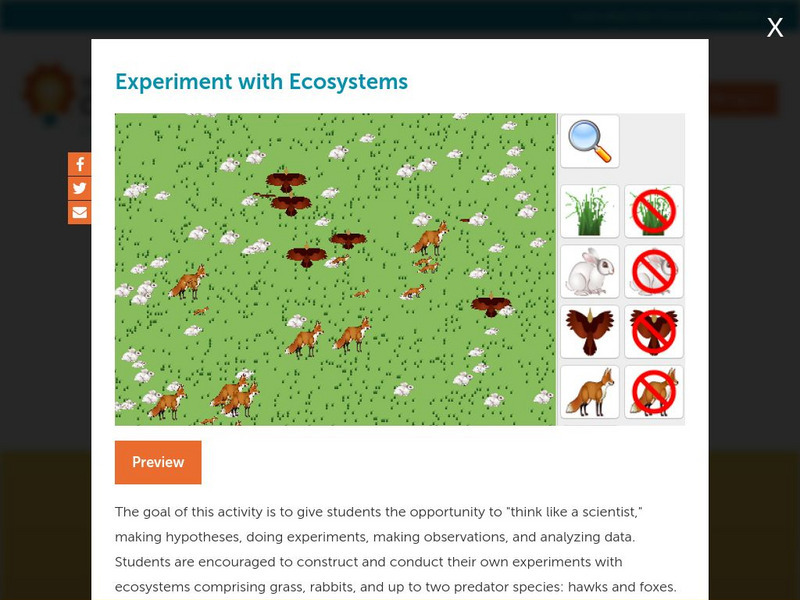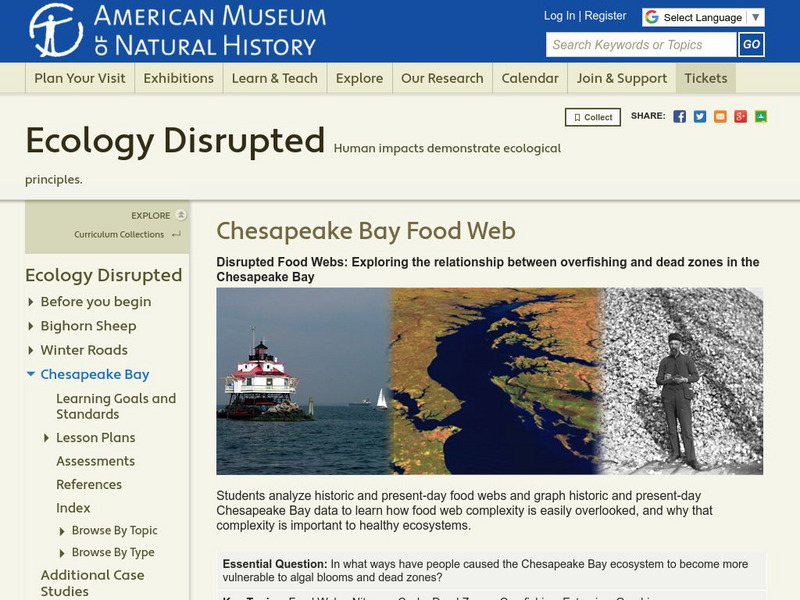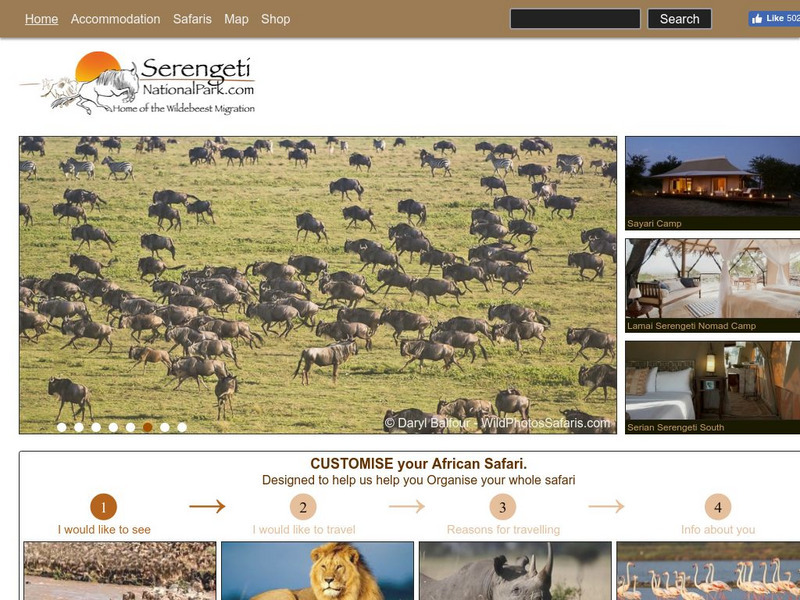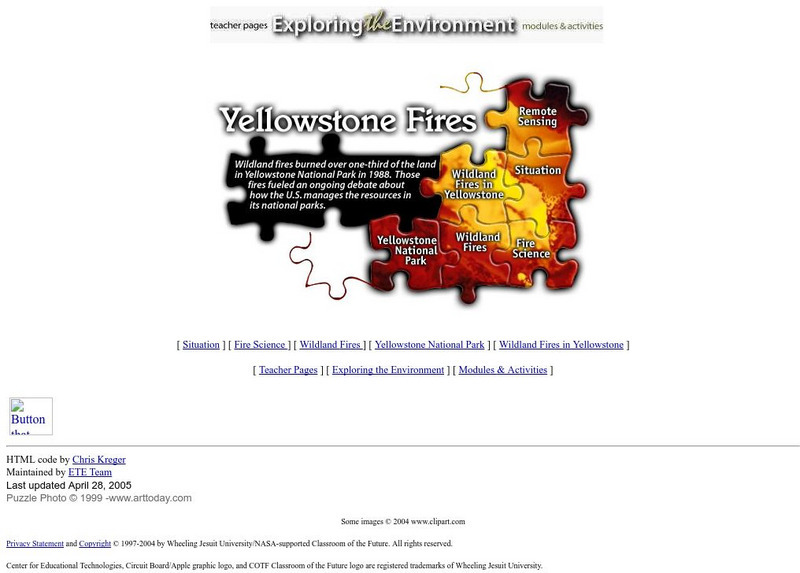Nature Conservancy
Nature Works Everywhere: Climate Change and the Role of Nature in Resilience
Learners will examine the ways that humans have impacted Earth, and then determine how well their home state is prepared for the impacts of climate change. [6 min, 55 sec] Includes lesson plan and studnet handouts.
Concord Consortium
Concord Consortium: Stem Resources: Experiment With Ecosystems
Learn what happens to different populations of organisms as their ecosystem changes. Design your own experiment and make your own guesses with what the result will be with this virtual ecosystem. Also experiment with producer/consumer...
Concord Consortium
Concord Consortium: Stem Resources: Predators and Prey
Did you ever want to be a hawk? In this virtual ecosystem, students will take on the role of a hawk and try to catch rabbits on a snowy field. Students will see which rabbits have adaptations that allow them to blend into the environment...
PBS
Pbs Learning Media: Biome in a Baggie
This ZOOMSci video segment shows how to create self-contained environments and explore how plants grow under different conditions. [3:24]
The Wonder of Science
The Wonder of Science: 3 Ess2 2: World Climates
Work samples, phenomena, assessment templates, and videos that directly address standard 3-ESS2-2: world climates.
Globio
Glossopedia: Environments
This article defines "environment" as a collection of animals and plants in a specific landscape and climate. The concept of differing types of environments is introduced. The impact of humans on environments and all environments'...
PBS
Pbs Learning Media: Farming the Desert: The Science Behind Desertification
This lesson introduces students to the factors that contribute to desertification and solutions that have been implemented in the Sahel region of West Africa. A 21-page teaching guide is also provided. [4:39]
American Museum of Natural History
American Museum of Natural History: Ecology Disrupted: Chesapeake Bay Food Web
In this comprehensive instructional activity unit, students examine how overfishing has affected Chesapeake Bay's ecosystem. They will study food webs from the past and present and graph related data.
Center for Educational Technologies
Nasa Classroom of the Future: Temperate Rainforest: Ecology and Land Use
Use these resources to study the ecology of the rainforest of the Pacific Northwest and issues surrounding its preservation.
Center for Educational Technologies
Nasa Classroom of the Future: Exploring the Environment: Tropical Poison
An educational module on biodiversity, economic growth, and medical research in rainforests. This can be used by students or teachers. It has a huge amount of information on agriculture, biodiversity, medicinal plants, animals, and more.
Other
Serengeti National Park
The beautiful, official site for the Serengeti National Park provides extensive information about the Serengeti ecosystem, physical features, wildlife, and taking a safari through the region. As an added bonus, learn some Swahili.
Nature Research
Nature Education: Energy Economics in Ecosystems
This article discusses how plants and microorganisms, until recently, have mostly controlled how much carbon dioxide is released into an ecosystem, and explains how this process works. Humans' burning of fossil fuels has upset the...
PBS
Pbs Learning Media: Sharks in Our Future
In this video segment from Nature, see the value that sharks can have on the tourism industry in an area. [1:41]
Center for Educational Technologies
Nasa Classroom of the Future: Yellowstone Fires
Information and activities enhance student exploration of wildfire ecology and human interventions in Yellowstone National Park, and provide a background for land use management studies.
NASA
Math Lesson Plan: Cyanobacteria Races: Cyanobacteria Motility [Pdf]
A comprehensive lesson plan about the movement of cyanobacteria includes a class experiment.
PBS
Pbs Learning Media: Nature Cat: Story Exploration Packet (Spanish)
Mientras ven Nature Cat, utilice estas herramientas para guiar las discusiones y actividades de aprendizaje. Tally ho!
PBS
Pbs Learning Media: Nature Cat: Story Exploration Packet
As you watch Nature Cat, use these tools to guide discussions and learning activities. Includes printables on story elements, alternate endings, vocabulary words, character traits, an episode map, and a Venn diagram.
PBS
Pbs: Plum Landing
Invite students to visit ecosystems around the world with this collection. This collection includes activities for the classroom, after school, and families. Also included is games.
Nature Conservancy
The Nature Conservancy: Nature Lab
These wonderful virtual field trips allow students to explore a coastal rain forest or the coral reefs in the Dominican Republic, and so much more.
BSCS Science Learning
Bscs: Frog Eat Frog World
Using maps and graphs of large data sets collected in FrogWatch, students will determine the range, preferred land cover, and proximity to water of the American bullfrog to figure out the bullfrog's requirements for food, water, and...
Environmental Education for Kids
Eek!: Habitats: Wetlands
Wetland ecosystems are extremely valuable to wildlife, supporting a greater number of animals than any other type of habitat. Wetlands also absorb flood waters; filter chemicals, sediments, and other impurities out of drinking water;...
Environmental Education for Kids
Eek!: Habitats: Prairie
Learn what prairies are, about the plants and wildlife that live there, and about the environmental efforts being made to restore them.
Concord Consortium
Concord Consortium: Stem Resources: The Virtual Ecosystem
What does competition for food do to a population? Experience what happens to a rabbit population with limited resources in this virtual ecosystem. At the end of the exercise, there are questions relating to concepts reviewed.
National Center for Ecological Analysis and Synthesis, University of California Santa Barbara
Kids Do Ecology: Learn About Ecology
This resource provides information about ecology.














